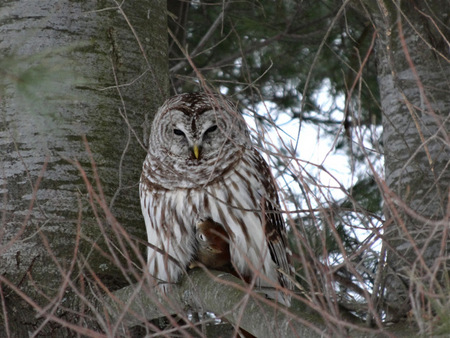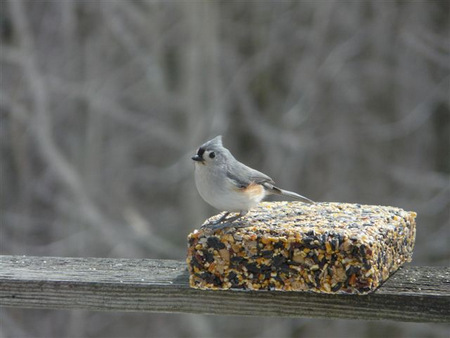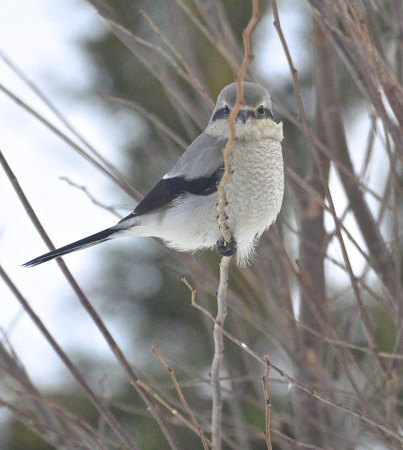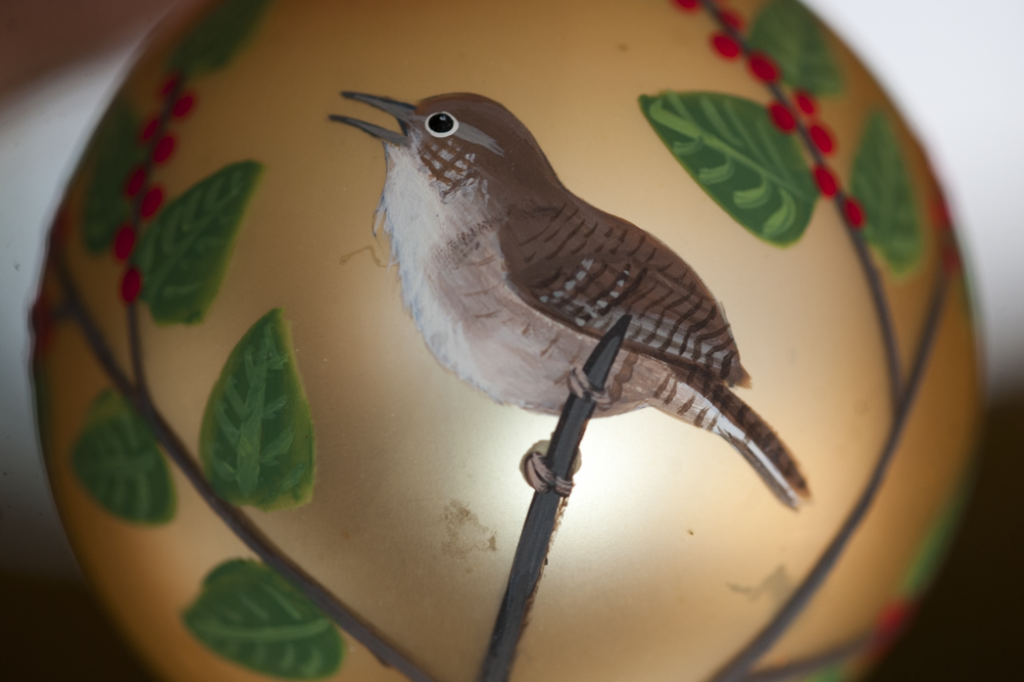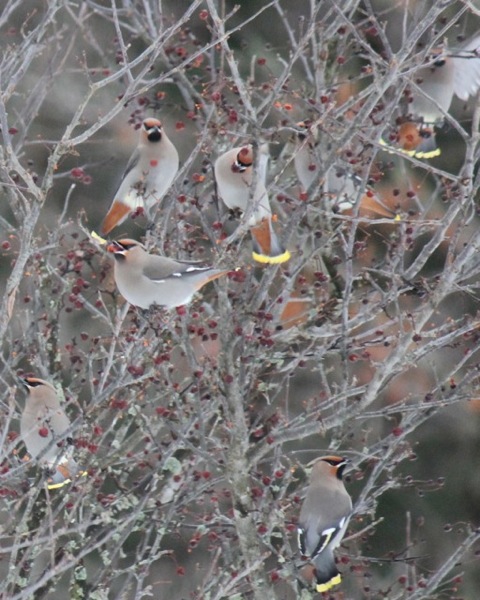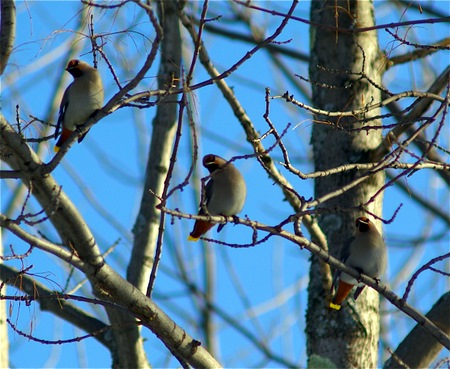The Mad River Valley is blessed with a variety of habitats, each attracting various species of birds. Habitats include: Deciduous Woods (hardwoods), Coniferous Woods (softwoods), Mixed Woods, Wetlands, Grasslands and Agricultural Lands, Residential, Riparian, Alpine (mountaintops). Learning which species prefer which habitats is part of the fun of birding the Valley.
Time of day – Most birds are active early in the morning and late afternoon. Often there is a burst of activity as the sun hits treetops. Get out there and see what’s feeding and flying. Sometimes rarities show up – Either birds that are supposed to live somewhere else, are here in larger numbers than expected, or are here in the wrong season. Keep your eyes open for these and report any to the website.
This monthly guide and arrival bird schedule is based on the 2002 VT Field Card and/or observations of Mad Birders. It includes bird species typically seen in the Mad River Valley. Many bird species arrive later in our valley than the 2013 VT Field Card indicates.
January
Check out year round residents at your feeders or on walks. It’s a good idea to have binoculars with you wherever you go! Year round residents include: Sharp-shinned Hawk, Cooper’s Hawk, Red-tailed Hawk, Ruffed Grouse, Wild Turkey, Rock Dove, Mourning Dove, Barred Owl, Northern Saw-whet Owl, Downy Woodpecker, Hairy Woodpecker, Pileated Woodpecker, Blue Jay, American Crow, Common Raven, Black-capped Chickadee, Tufted Titmouse, Red-breasted Nuthatch, White-breasted Nuthatch, Brown Creeper, Golden-crowned Kinglet, European Starling, Cedar Waxwing, Dark-eyed Junco, Northern Cardinal, Purple Finch, House Finch, American Goldfinch, Evening Grosbeak, Carolina Wren, American Robin, Eastern Bluebird (rare in winter).
Watch for winter visitors and irruptives (wanderers, not here every year) – Snowy Owl, Pine Siskin, Snow Bunting, Northern Shrike, Pine Grosbeak, Common and Hoary Redpolls, Bohemian Waxwing, Horned Lark, White-winged Crossbill. Red-bellied Woodpecker, American Tree Sparrow
February
Week 1 – Owls start nesting. Listen for Barred Owl calls, usually at dusk, evening.
Week 2 – Great Backyard Bird Count (Check out http://www.birdsource.org/gbbc/ for complete information.
Week 3 – Listen for Woodpeckers drumming, Chickadees and Nuthatches singing spring songs.
Week 4 – Spring migration begins – (m) – bird species seen in migration only. Arrival schedule follows:
Red-winged Blackbird, Brown-headed Cowbird
March
Week 1– American Kestrel, Killdeer, American Robin, Common Grackle
Week 2 – Turkey Vulture, Northern Harrier, Northern Flicker, Eastern Bluebird, Song Sparrow
Week 3 – Pied-billed Grebe (m), Great Blue Heron, Mallard, Black Duck, Wood Duck, Common Merganser, Hooded Merganser, Bufflehead, Belted Kingfisher, Tree Swallow, American Woodcock
Week 4 –Canada Goose, Snow Goose (m), Broad-winged Hawk, Wilson’s Snipe, Eastern Phoebe, Fox Sparrow (m)
April –
Week 1– Osprey, Yellow-bellied Sapsucker, Winter Wren, Savannah Sparrow
Week 2 – American Bittern, Ruby-crowned Kinglet (m), Hermit Thrush, Yellow-rumped Warbler, Pine Warbler, Palm Warbler, Swamp Sparrow, White-throated Sparrow
Week 3 – Barn Swallow, Blue-headed Vireo, Chipping Sparrow
Week 4 – Long-tailed Duck (m), Solitary Sandpiper (m), Spotted Sandpiper, Chimney Swift, Eastern Kingbird, Cliff Swallow, House Wren, Marsh Wren, Brown Thrasher, Black-throated Green Warbler, Black-and-white Warbler, Common Yellowthroat.
May- Mad Birder walks and bird migration kick into high gear.
Week 1– Ruby-throated Hummingbird, Least Flycatcher, Great-crested Flycatcher, Veery, Wood Thrush, Gray Catbird, Warbling Vireo, Nashville Warbler, Northern Parula, Yellow Warbler, Chestnut-sided Warbler, Magnolia Warbler, Black-throated Blue Warbler, Blackburnian Warbler, American Redstart, Ovenbird, Northern Waterthrush, Scarlet Tanager, Rose-breasted Grosbeak, White-crowned Sparrow (m), Bobolink, Baltimore Oriole
Week 2 – Swainson’s Thrush, Red-eyed Vireo, Tennessee Warbler (m), Philadelphia Vireo (m), Cape May Warbler (m), Bay-breasted Warbler (m), Mourning Warbler, Wilson’s Warbler (m), Canada Warbler, Indigo Bunting, Lincoln’s Sparrow (m)
Week 3 – Black-billed Cuckoo, Common Nighthawk, Eastern Wood-Peewee, Yellow-bellied Flycatcher, Alder Flycatcher, Willow Flycatcher, Bicknell’s Thrush, Cedar Waxwing, Blackpoll Warbler
June and July –
Spring migration ends. Most birds are nesting in appropriate habitats. Many birds do not sing as much, being very quiet around the nest. Using good observation skills is key to see birds at this time.
Baby birds are fledging – Look/listen for begging babies being fed by parents. Some post-breeding birds start to wander, shorebird migration begins.
August
Shorebird migration increases, warbler and hawk migration begins. Team Pipit begins monitoring Ward Hill daily. Watch for mixed flocks of songbirds feeding and moving quickly. Chickadees are often present in these flocks.
September
Biggest fall migration month, led by waves of warblers and hawks. Shorebird migration slows. Team Pipit continues monitoring Ward Hill. Keep your binos handy, especially when north winds blow and birds ride the winds south.
October
Waterfowl migration shifts into high gear, also geese, sparrows, and kinglet movement.
– White-winged Scoter, Black Scoter, Bufflehead – Sometimes seen at Blueberry Lake. Snow Goose show at Dead Creek in Addison.
November
Woods may be quiet, check for winter irruptives (occasional wandering visitors) to start arriving – See January for list
December
Fall migration ends. Check for those winter irruptives listed in January. They have all been seen in the Valley in recent years. Other possibilities include Red-bellied Woodpecker, Carolina Wren, Northern Hawk Owl, Great Gray Owl, Lapland Longspur, Red Crossbill.
Valley/Northfield Christmas Bird Count – First Friday between December 14 and January 4.
